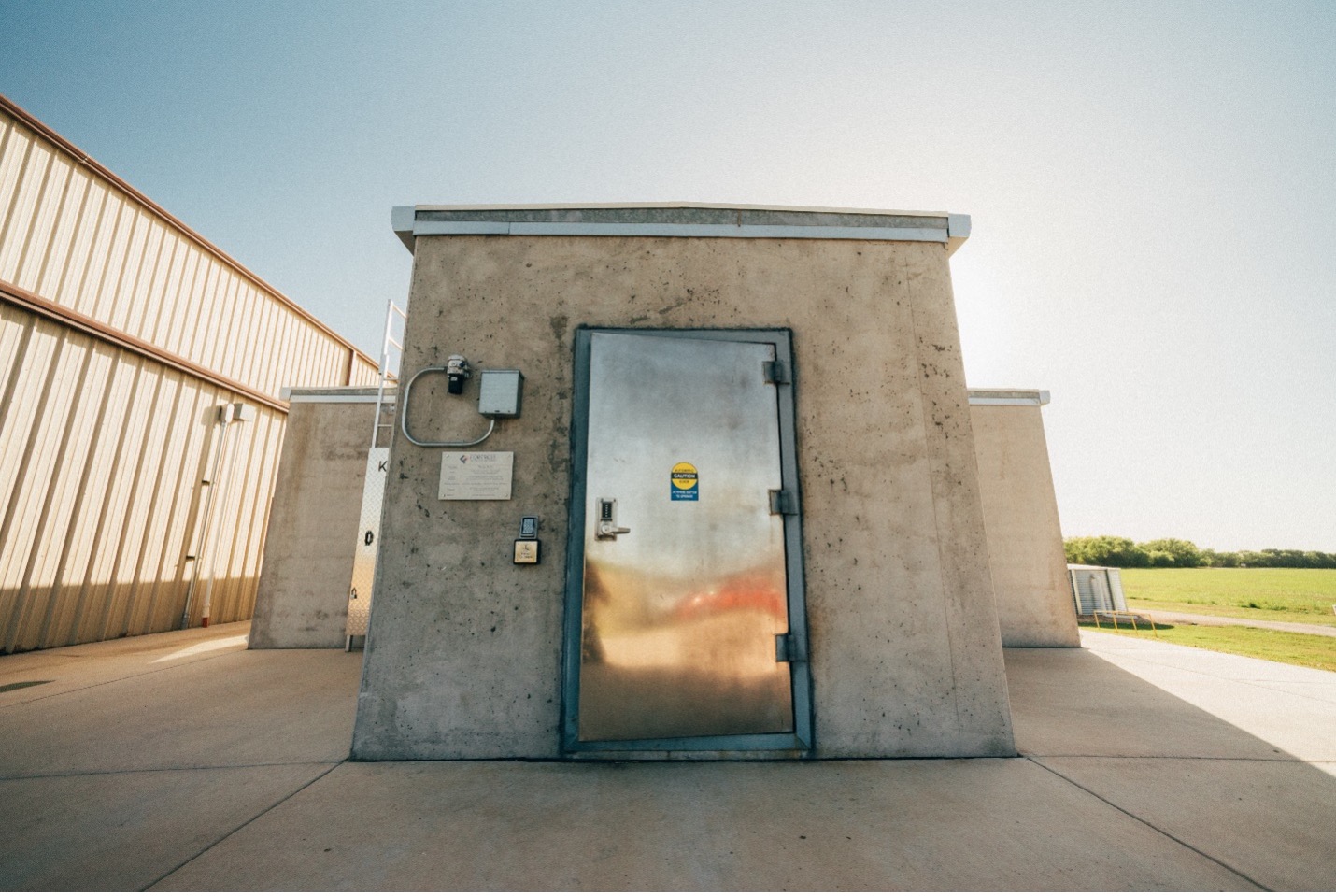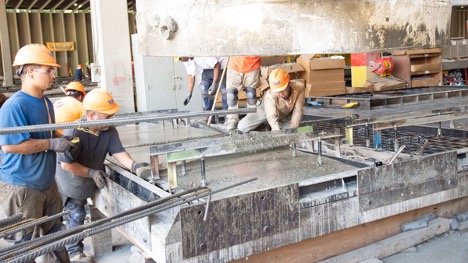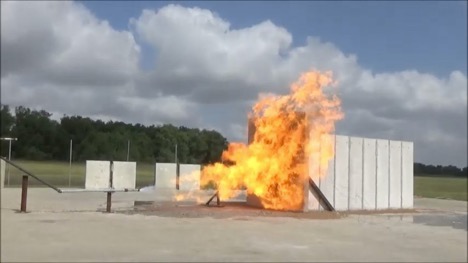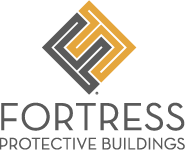Precast Concrete Buildings – Ideal for Disaster Resilience

Why precast concrete buildings are recommended for worksite safety & disaster protection:
Every worksite must account for staff protection during an emergency or natural disaster. Protecting workers is of chief importance during a catastrophe, especially if a worksite is exposed to blast, fire, or other potential operational and natural hazards.
Planning and safety drills only get you so far. Investing in disaster resilience through protective, hazard-resistant buildings is one of the best ways to ensure that your employees are protected in unexpected events.
But how can you choose the right structures for your worksite? In most emergency scenarios, properly designed precast concrete buildings are ideal for improving disaster resilience and protecting worksite staff members. Let’s look at why precast concrete is so effective in hazardous situations.
What is disaster resilience?
Disaster resilience, in a nutshell, is the ability of a facility or organization to withstand major catastrophes. Disasters can include extreme weather events like hurricanes, tornadoes, and wildfires. However, disasters may also include accidents at worksites such as explosions, fires, toxic gas leaks, and so on.
The better an organization incorporates strong, resilient buildings and infrastructure, the faster it can recover from natural disasters or worksite accidents. In some cases, this is achieved by using a FORTRESS building, which can protect equipment and personnel critical to a safe shutdown of a facility in the event of a catastrophe.
More importantly, high disaster resilience means greater personnel safety. Disaster-resilient buildings serve as key shelters for worksite staff in the event of a natural disaster or facility emergency. The right buildings may, in fact, protect workers for long enough that the incident can either be brought under control or emergency services have time to react after they arrive on-site.

What are precast concrete structures?
Precast concrete structures come in many different sizes and types. While traditional concrete structures are typically built on-site, many precast components – such as walls or modules – are fabricated off-site at dedicated plants, with final building assembly and finishing on-site. A benefit is the high level of quality control because manufacturers do not need to account for fluctuating environmental factors, such as changing weather, humidity levels, and more.
Precast concrete modules, such as FORTRESS Protective Buildings, are fully functional structures with specific purposes. Precast concrete panels and modules are usually shipped to their final sites for assembly.
Safety benefits of precast concrete buildings
Standard precast concrete is versatile and convenient. But specially-designed precast concrete – such as the unique concrete used for FORTRESS Protective Buildings – is engineered for disaster resilience and hazard resistance.
Disaster-resilient precast concrete buildings are the top choices for organizations looking to improve their facility/worksite disaster resilience. Whether as dedicated safety bunkers or commercial buildings, they provide multiple distinct safety benefits for both site personnel and any vital equipment housed within them.

Blast & fire load resistance
For starters, reinforced precast concrete buildings are highly resistant to worksite blast loads from explosions. Disaster-resistant precast concrete is very durable, especially if the concrete in question is reinforced with steel rebar. For this reason, all FORTRESS Protective Buildings are constructed from precast, reinforced concrete to ensure occupant protection.
Furthermore, these precast concrete structures are inherently resistant to fires and other thermal hazards. Concrete, in general, is very resilient against heat – it takes a long time for fires and similar hazards to diminish concrete’s structural integrity enough to cause significant damage.
Because of these resistances, reinforced precast concrete buildings can capably protect building occupants against major facility threats in the event of a fire or explosive incident.
Extreme weather protection
But FORTRESS’s specially designed precast concrete structures are not only excellent for defending against facility industry hazards. They can also protect occupants and equipment from extreme weather hazards, such as heavy winds and storm debris.
Not only can this structural strength resist blast loads, but it can also resist high winds from major storms and the resulting debris, including tornadoes. Thus, precast blast-resistant buildings serve well as defensive structures to house site personnel during a major storm.
Virtually maintenance-free
In addition to the above-mentioned benefits, FORTRESS precast concrete buildings are virtually maintenance-free. How does this relate to risk reduction and disaster resilience?
Put simply, being able to keep your protective buildings’ structural integrity and resilience metrics up without ongoing maintenance means those buildings are more likely to function as designed if and when a disaster occurs. If a building must be constantly maintained or modified to retain its defensive properties, the odds of it failing in some way during an emergency are higher.
Disaster-resistant precast concrete structures don’t require much maintenance or upkeep once installed by licensed contractors. They remain durable over the long term.

Why FORTRESS is the right precast concrete building for any worksite
FORTRESS Protective Buildings are versatile and effective turnkey safety solutions. Designed from top to bottom to meet all building site safety needs, these precast concrete structures are engineered for high resilience and long-lasting performance.
To meet the unique needs of individual worksites, FORTRESS concrete products are available in customizable layouts. No matter which layout is chosen, confidence can be had knowing that FORTRESS key building components have been completely field-tested to ensure hazard resistance.
Ultimately, the best way to bolster worksite disaster resilience is by installing new, effective blast-resistant buildings. But when you need to ensure worksite personnel gets home safely from hazards other than blast, you should only rely on the durability of our proven precast concrete designs.
Contact FORTRESS today to ask about reducing the impact of natural disasters and worksite emergencies with our precast modular concrete buildings.

